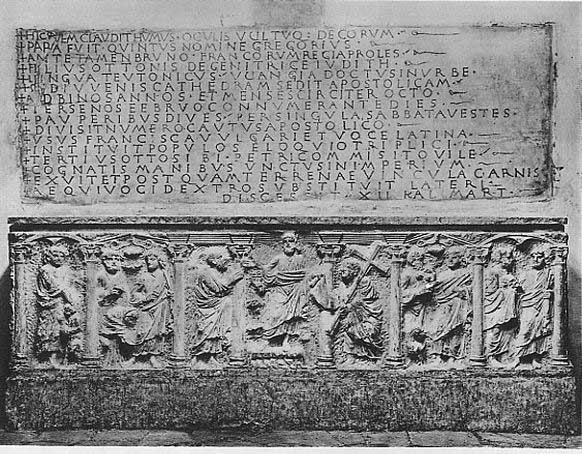|
990s
The 990s decade ran from January 1, 990, to December 31, 999. Significant people * Al-Qadir * Mahmud of Ghazni * Pope John XV Pope John XV ( la, Ioannes XV; died on 1 April 996) was the bishop of Rome and ruler of the Papal States from August 985 until his death. A Roman by birth, he was the first pope who canonized a saint. The origins of the investiture controversy ... * Pope Gregory V References {{Reflist ... [...More Info...] [...Related Items...] OR: [Wikipedia] [Google] [Baidu] |
Al-Qadir
Abu'l-Abbas Ahmad ibn Ishaq ( ar, أبو العباس أحمد بن إسحاق, Abu'l-ʿAbbās Aḥmad ibn Isḥāq; 947/8 – 29 November 1031), better known by his regnal name al-Qadir ( ar, القادر بالله, al-Qādir bi’llāh, Made powerful by God), was the Abbasid caliph in Baghdad from 991 to 1031. He was the grandson of al-Muqtadir, and was chosen in place of the deposed caliph, at-Ta'i, his cousin. His reign was marked by the strengthening of the Abbasid caliphate's role as the champion of Sunni Islam against Shi'ism, notably through the Baghdad Manifesto of 1011, and through the codification, for the first time, of Sunni doctrines and practices in the , thereby presaging the "Sunni Revival" later in the century. Early life Abu'l-Abbas Ahmad, the future al-Qadir, was born on 28 September 947 in Baghdad. His father Ishaq was a son of Caliph al-Muqtadir (), and his mother Dimna was a slave concubine. Shortly before his birth, in December 945, Baghdad and the rest of ... [...More Info...] [...Related Items...] OR: [Wikipedia] [Google] [Baidu] |
Mahmud Of Ghazni
Yamīn-ud-Dawla Abul-Qāṣim Maḥmūd ibn Sebüktegīn ( fa, ; 2 November 971 – 30 April 1030), usually known as Mahmud of Ghazni or Mahmud Ghaznavi ( fa, ), was the founder of the Turkic Ghaznavid dynasty, ruling from 998 to 1030. At the time of his death, his kingdom had been transformed into an extensive military empire, which extended from northwestern Iran proper to the Punjab in the Indian subcontinent, Khwarazm in Transoxiana, and Makran. Highly Persianized, Mahmud continued the bureaucratic, political, and cultural customs of his predecessors, the Samanids. He established the ground for a future Persianate state in Punjab, particularly centered on Lahore, a city he conquered. His capital of Ghazni evolved into a significant cultural, commercial, and intellectual centre in the Islamic world, almost rivalling the important city of Baghdad. The capital appealed to many prominent figures, such as al-Biruni and Ferdowsi. Mahmud ascended the throne at the age of 27 ... [...More Info...] [...Related Items...] OR: [Wikipedia] [Google] [Baidu] |
Pope John XV
Pope John XV ( la, Ioannes XV; died on 1 April 996) was the bishop of Rome and ruler of the Papal States from August 985 until his death. A Roman by birth, he was the first pope who canonized a saint. The origins of the investiture controversy stem from John XV's pontificate, when the dispute about the deposition of Archbishop Arnulf of Reims soured the relationship between the Capetian kings of France and the Holy See. Early life John XV was the son of Leo, a Roman presbyter. Before he became pope in August 985, John was cardinal-priest of St. Vitalis. Pontificate John XV's venality and nepotism allegedly made him very unpopular with the citizens of Rome. However, Joseph Brusher finds this unproven, as John XV had little authority in Rome at that time. Crescentius II, patrician of Rome, significantly hampered the pope's influence, but the presence of Empress Theophanu in Rome from 989 to 991 restrained Crescentius' ambition. John was a patron and protector of the reforming mon ... [...More Info...] [...Related Items...] OR: [Wikipedia] [Google] [Baidu] |
Pope Gregory V
Pope Gregory V ( la, Gregorius V; c. 972 – 18 February 999), born Bruno of Carinthia, was the bishop of Rome and ruler of the Papal States from 3 May 996 to his death. A member of the Salian dynasty, he was made pope by his cousin, Emperor Otto III. Family Gregory was a son of Otto I, Duke of Carinthia, a member of the Salian dynasty who was a grandson of Holy Roman Emperor Otto I. Gregory V succeeded John XV as pope when only twenty-four years of age. He was the chaplain of his cousin, Otto III, who presented him as candidate. Gregory V is often counted as the first German pope (or the second if Boniface II, an Ostrogoth, is counted). Policies Politically, Gregory V acted consistently as the Emperor's representative in Rome and granted many exceptional privileges to monasteries within the Holy Roman Empire. One of his first acts was to crown Otto III emperor on 21 May 996. Together, they held a synod a few days after the coronation in which Arnulf, Archbishop of Reims, was ... [...More Info...] [...Related Items...] OR: [Wikipedia] [Google] [Baidu] |


